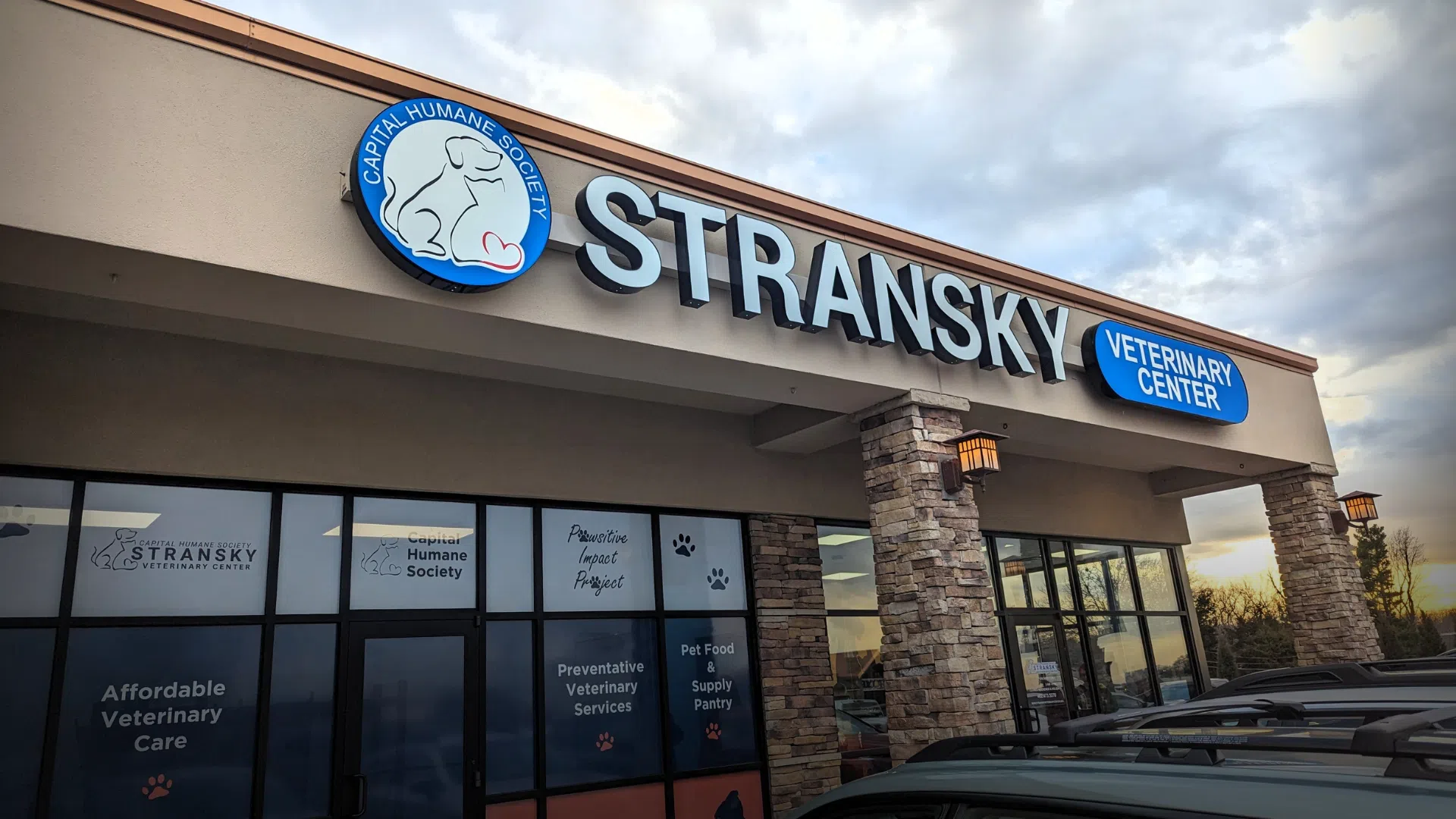Lincoln’s Capital Humane Society opened up a new affordable veterinary clinic on 56th and “O” Street in early March. Since opening, over 250 pets have visited the Stransky Veterinary Center for care.
“We’re very happy with how it’s going so far,” Matt Madcharo, Capital Humane Society’s Executive Director, told KLIN.
The Stransky Center is the Humane Society’s third location in Lincoln, joining the Admissions and Assessment center at 2320 Park Blvd. and the Pieloch Pet Adoption Center at 6500 S. 70th Street, and was conceived by Madcharo as an affordable veterinary option for many who can not afford steep bills for vet services like spay/neuter, vaccinations, microchipping, and dental care services.
Evidently, the community need for an affordable vet clinic was also steep. Crude math would approximate about 11 appointments a day for the Stransky Center team, consisting of about seven staff members and one veterinarian.
“We’re just going to continuing to spread the word about it. So that month over month, we see more and more pets over there and get more and more pets spayed and neutered,” said Madcharo, who has repeatedly cited spay/neuter services as a key method to prevent the proliferation of stray pets — who often end up processed in the Capital Humane Society’s system.
In fact, the Humane Society have been struggling with overcrowding for months… especially with dogs.
Despite an excellent inaugural month for the Stransky Center, Madcharo did not have good news regarding their overflow status.
“On the cat side of things, we’re in really good shape, although that will probably change here because kitten season is coming,” Madcharo said. “But on the dog side… as of this morning, we were at 95% capacity between both of our facilities for dogs, and we only had five open kennels between both buildings.”
Whether it’s through their foster care or adoption programs, “we got to get dogs into homes,” said Madcharo, who unfortunately does not see the issue changing for the foreseeable future, until more pets get spayed and neutered in the community.
“That’s the way that we can reduce future intake at the shelter, is to get more pets spayed and neutered,” Madcharo concluded.
To book appointments and learn more about the Stransky Veterinary Center, visit stranskyveterinarycenter.org.







